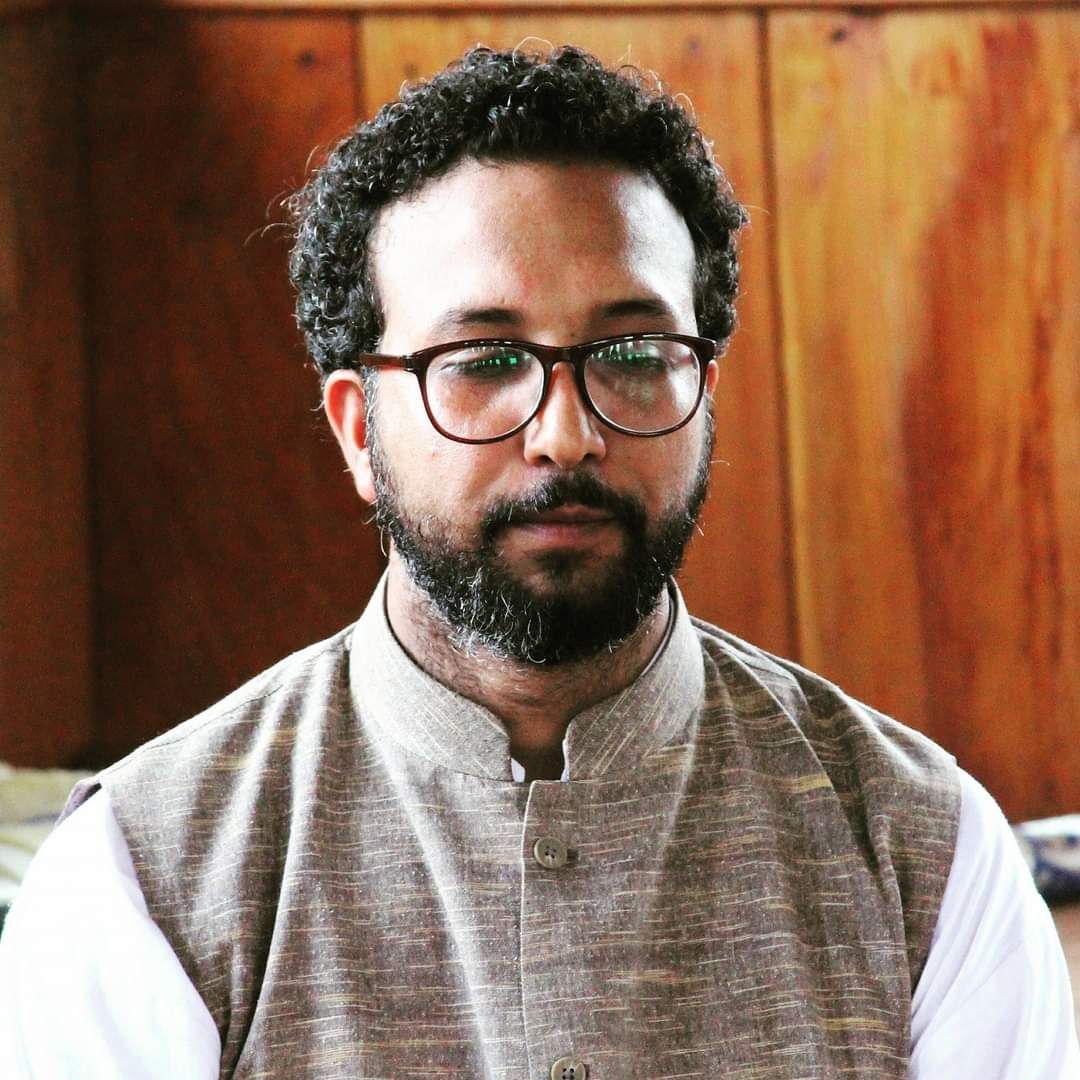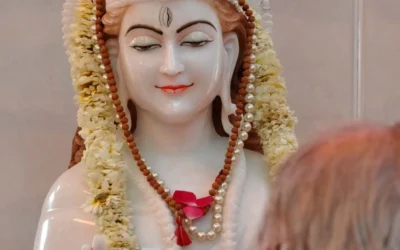SERENITY IN SECONDS The Art & Science of “Short-Meditation” (2–5 Minutes Only)
There are two ways to meditation. Formal one that you do at special times and informal that you can do sitting in an office chair or in a car or even in the middle of a noisy party and since the whole world has become a noisy party it’s more likely that we are going to need the informal more often than the formal.
~ Swami Veda Bharati
Meditation is the process of cultivating a tranquil and serene flow of the mind. It is a seamless, spontaneous flow of the same awareness. A calm and peaceful mind is a Suman—a beautiful, fragrant mind like a flower, a mind which has the fragrance and beauty of a blossom. As a result, this “serene mind” harmonizes and aligns the life forces, enabling life to unfold with the greatest exuberance and joy.
In yoga psychology, there is a well-established rule: whatever we do with our mind over a period of time becomes its habit and eventually its nature. If we allow the mind to become disturbed or distracted frequently, this tendency takes root and defines the mind’s character. Such a mind is not beautiful at all—rather, it becomes unpleasant and problematic. Therefore, we need to calm the mind again and again until that serenity becomes its natural state.
Yoga psychology also postulates that the human mind can only focus on one thing at a time. This gives us a ray of hope, as we can choose how we want to be in the next moment—peaceful or miserable—by simply choosing what we allow ourselves to experience.
The title “SERENITY IN SECONDS” is not an exaggeration, but a statement of truth. When yoga asserts that the mind can focus on only one thing at a time, a question arises: how long does that single unit of focus last? Vaisheshika philosophy defines time as the duration it takes a paramāṇu (the minutest particle) to move within its own dimension—its own length and width. In other words, a singular vibration of an atom.
In each of these single moments, something is being registered in our awareness. It feeds the mind with impressions, enabling cognition and emotional response.
Therefore, nothing that happens to us occurs suddenly or by accident. It is not a whim of fate, but the result of a moment-by-moment accumulation. We unconsciously allow the mind to be influenced by internal and external surroundings. This leads to the gradual build-up of either positive or negative tendencies, culminating in states of happiness (sukha) or suffering (duḥkha).
In yoga, time is generally measured in four ways:
- By number
- By breath
- By pulse
- By mantra
I would recommend the awareness of breath and mantra—either separately or in combination.
There is no point in regretting or wallowing in self-pity. What has happened, has happened. Nothing can really be undone. We can only learn from it and take responsibility for the next step in the next moment. That is something within our reach.
Yoga Sūtra of Sage Patañjali: हेयं दुःखमनागतम्।
Heyam duḥkham-anāgatam — Future suffering is to be avoided.
It has not yet arrived, so it can still be prevented.
However, this re-calibration of the mind, at first, requires some effort. As the Yoga Sūtras say, it requires a-prayatna-viśeṣa—a “very special effort” on the part of the individual. This effort, though, is gentle and inward, based entirely on a clear understanding. The person must truly comprehend the value and necessity of being calm and peaceful throughout the events of life.
All this is fine, but how can I meditate? Life is moving so fast, and I have to cope with it. There are myriad distractions. Fixing a regular time for meditation becomes a challenge—because we feel we don’t have time.
First of all, life is composed of only two things: time and energy. That’s all we have—a finite amount of both.
How can we meditate in this fast-paced world? It’s true that the modern environment, full of distractions, makes sustained practice difficult. Yet, paradoxically, we seem to have all the time in the world for distractions, worries, and depressive thoughts. We frequently complain that we don’t have time to pause, to reflect, to witness our breath, or to turn inward.
But if you truly reflect, you’ll realize there is time. You don’t need to sit for long durations to gain the benefits of meditation.
Here’s how you can find time for meditation within your busy schedule:
- When you wake up, just before you rise to start your day
- After your ablutions
- Before and after breakfast
- Before leaving for work
- Before you start driving
- While sitting in public transport
- Before beginning work
- Before and after finishing any taskBefore and after lunch
- Before driving home, or upon returning home
- During television commercials
- Before and after dinner
- Just before going to sleep
Additionally:
- While waiting to board a flight, with an hour to spare
- During the flight itself
- Between connecting flights
- After a heated argument
- When overcome with intense desire or agitation
- Before making any important decision
- As a yoga teacher, before starting and after concluding your class
If you start training your mind to look for these small windows—just 2, 3, or 5 minutes—you will realize how many opportunities are available each day. Even the briefest of moments can become a doorway to inner stillness.
Synopsis of Two-to-Five Minute Meditation (120–300 Seconds)
- Sit comfortably (on the ground or a chair).
- Keep your spine straight and body balanced.
- Bring your mind’s attention to the seat beneath you.
- Observe your body—from the base up to the crown of the head, then back down to the seat, and to the toes. Repeat in reverse.
- Relax your forehead.
- Relax your jaw.
- Relax your shoulders.
- Relax your entire body, from shoulders down to your toes.
- Bring attention to your breathing.
- Observe the natural flow of the breath. Don’t control it; simply notice it.
- Gently shift your focus to your nostrils. Observe the breath’s flow and its touch inside the nostrils, at the mucous membrane.
- Breathe slowly, gently, and smoothly.
- Notice: inhalation may feel slightly cooling; exhalation, slightly warming.
- Without breaking awareness of the breath’s flow and touch, gently open your eyes.
Benefits of Short Meditation
- Frequent short meditations help cultivate a calm, quiet state of mind, relieving stress and anxiety.
- They facilitate deeper awareness of body, breath, and mind, helping one reflect objectively and cultivate awareness of emotions and actions.
- These meditations help us remain in the present, letting go of the burden of past experiences and worries about the future.
~OM Tat Sat







0 Comments